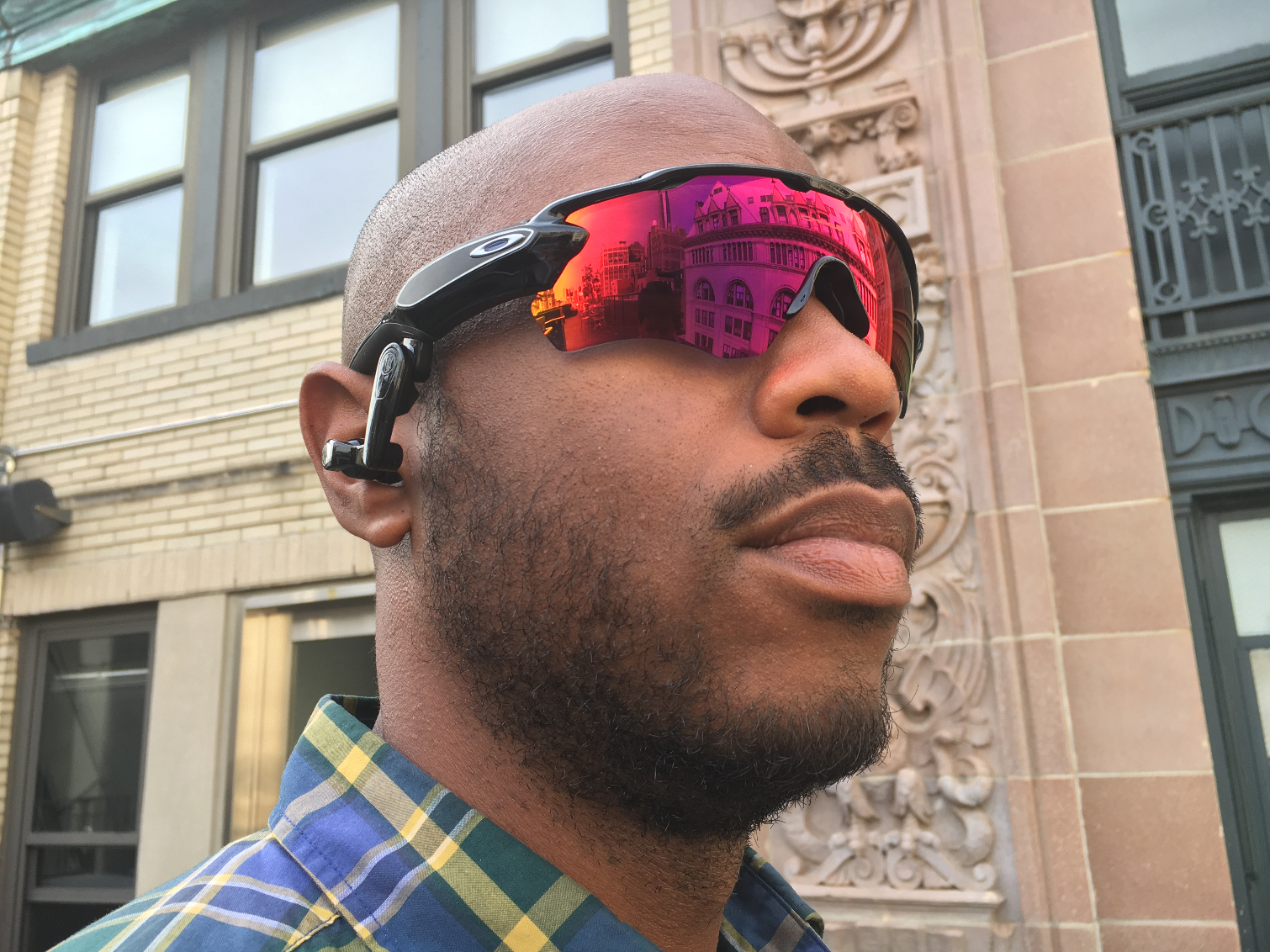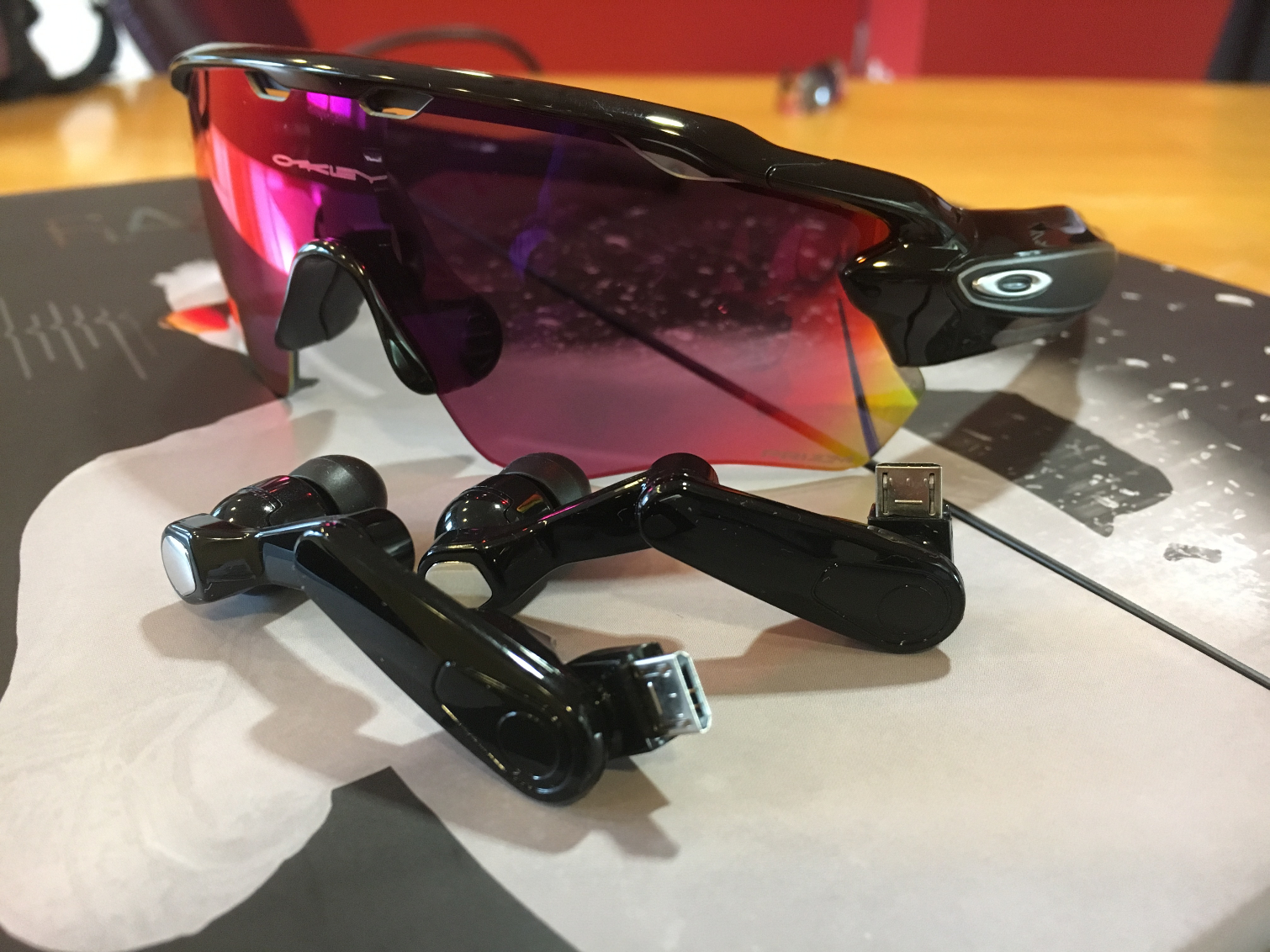Oakley's High-Tech Workout Shades Have Built-in Personal Trainer
These pricey specs provide real-time coaching feedback as you run or bike.
Oakley and Intel have teamed up to put a personal trainer in your ear with the Oakley Radar Pace, a set of high-tech specs that provide personal coaching advice while you're out on a run or a bike ride. I went hands- and heads-on with the Oakley Radar Pace, available on Oct. 1 for $449, and came away intrigued at how well the glasses not only heard, but responded to voice commands.

At first glance, the Oakley Radar Pace looks very similar to the Oakley Thump, a set of sunglasses with a built-in MP3 player. But while the Radar Pace have little earbuds for listening to music, the technology packed inside them—as well as Oakley's app—will potentially let runners and cyclists get a lot more out of their workouts through an interactive voice coach that analyzes your heart rate, pace, and other data, and give you suggestions on how to improve.
Designed in conjunction with Intel, the Radar Pace lets you simply say "start workout," "heart rate," "what's my pace," or several other statements, and the glasses will provide you the answer. They're also contextually aware, so you can ask follow-up questions to your initial queries, a novel feature for fitness-tracking devices.
At just 53 grams, the Radar Pace felt very light on my head, no heavier than the $15 pair of running shades I picked up at a Walgreens. Their wrap-around style gives you an almost Terminator-like look. The Radar Paces come with two lenses: a tinted pair and a clear pair, for when you're running or cycling in low light.
MORE: Best Fitness Trackers for Running, Swimming and Training

Also included are different nose bridges, as well as two other size ear tips, although I found the middle-size tips to be plenty comfortable. Oakley also packs in a USB charging cable and a hard carrying case, which you better use with shades that cost this much.
The Radar Pace are designed to be used along with a smartphone; Oakley's app processes the data gathered from the glasses' accelerometer and other sensors, and then relays that information back to the wearer via voice guides. Unfortunately, the glasses lack a heart rate monitor, so you'll need to pair them with a chest strap or some other device if you want to integrate heart rate data. It's a bit of a bummer, especially at this price point.

However, the Radar Pace also work with Google Now and Siri, and Oakley says that the microphones in the glasses are designed to block out wind noises, even when you're traveling at speeds at up to 30 miles per hour. The left arm of the glasses has a small touch panel, which you can use to control music playback from your phone.
The Radar Pace are rated to withstand drops from a few feet, as well as a splash or two of water, and their battery should last between 4-6 hours, according to Oakley. To recharge them, you can unplug either earbud (they connect via microUSB), and plug in a charging cord.
As a runner who likes to travel light, I wish that the Radar Pace had a built-in heart rate monitor, but I'm interested in how insightful the voice coach can be. I plan to put it through its paces, so to speak, on foot as well as on a bike; stay tuned for our full review.
Sign up to get the BEST of Tom's Guide direct to your inbox.
Get instant access to breaking news, the hottest reviews, great deals and helpful tips.

Michael A. Prospero is the U.S. Editor-in-Chief for Tom’s Guide. He oversees all evergreen content and oversees the Homes, Smart Home, and Fitness/Wearables categories for the site. In his spare time, he also tests out the latest drones, electric scooters, and smart home gadgets, such as video doorbells. Before his tenure at Tom's Guide, he was the Reviews Editor for Laptop Magazine, a reporter at Fast Company, the Times of Trenton, and, many eons back, an intern at George magazine. He received his undergraduate degree from Boston College, where he worked on the campus newspaper The Heights, and then attended the Columbia University school of Journalism. When he’s not testing out the latest running watch, electric scooter, or skiing or training for a marathon, he’s probably using the latest sous vide machine, smoker, or pizza oven, to the delight — or chagrin — of his family.
